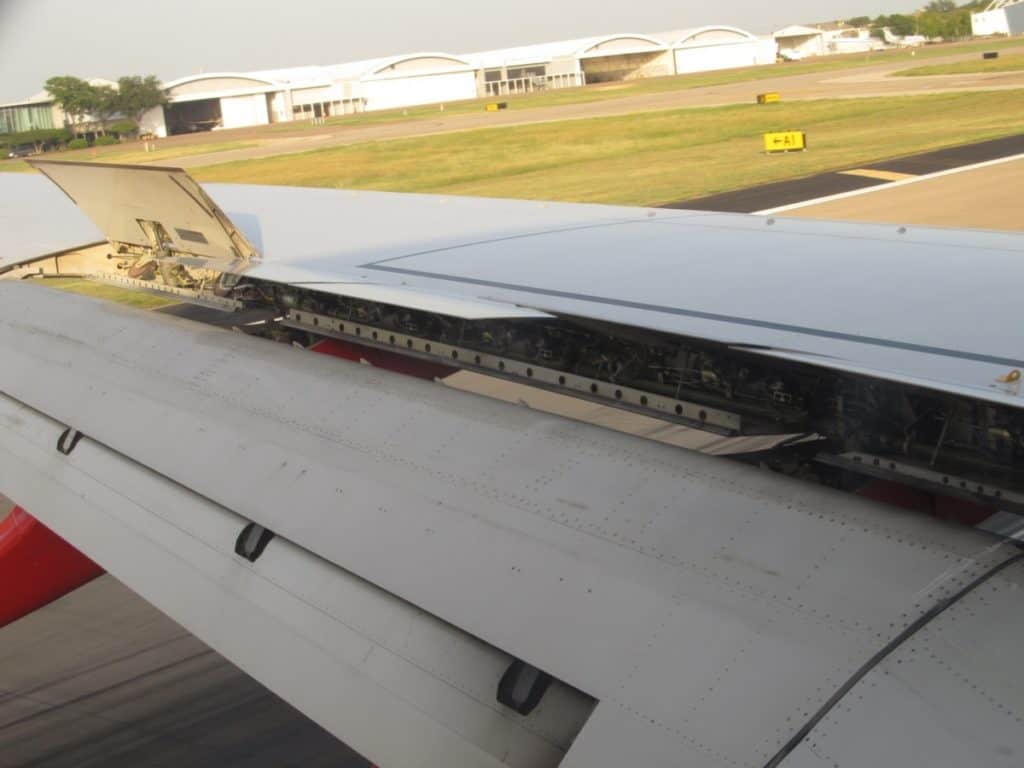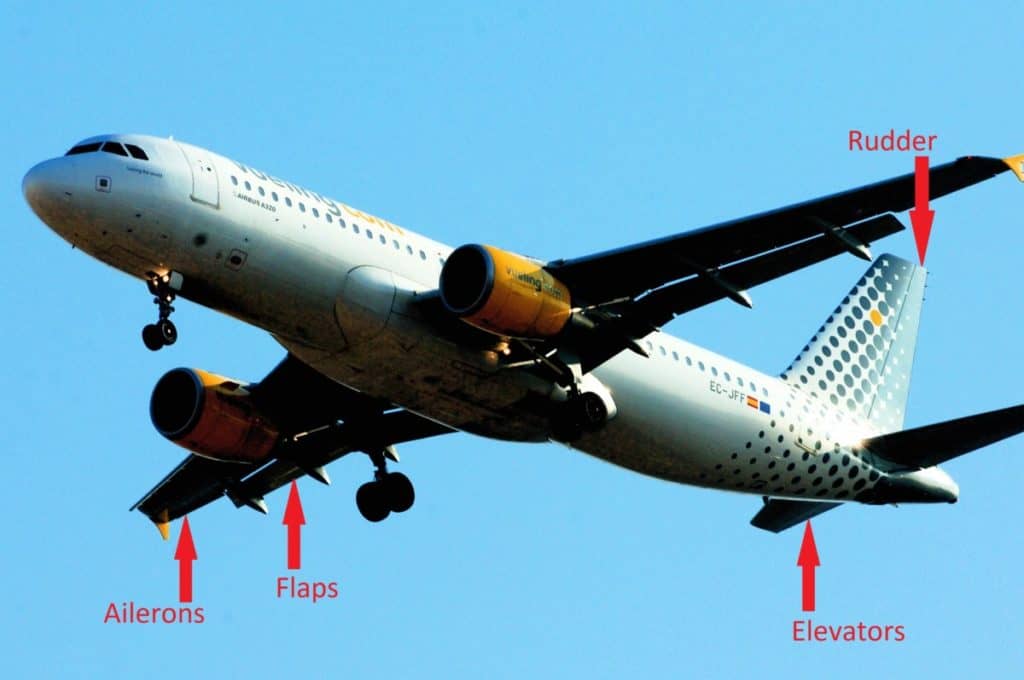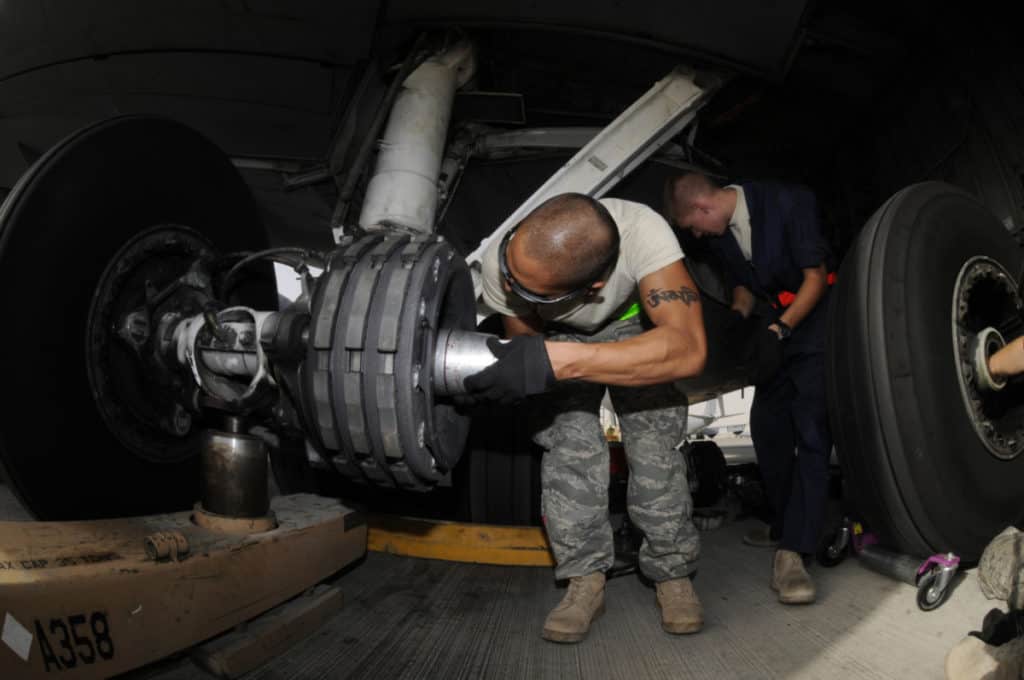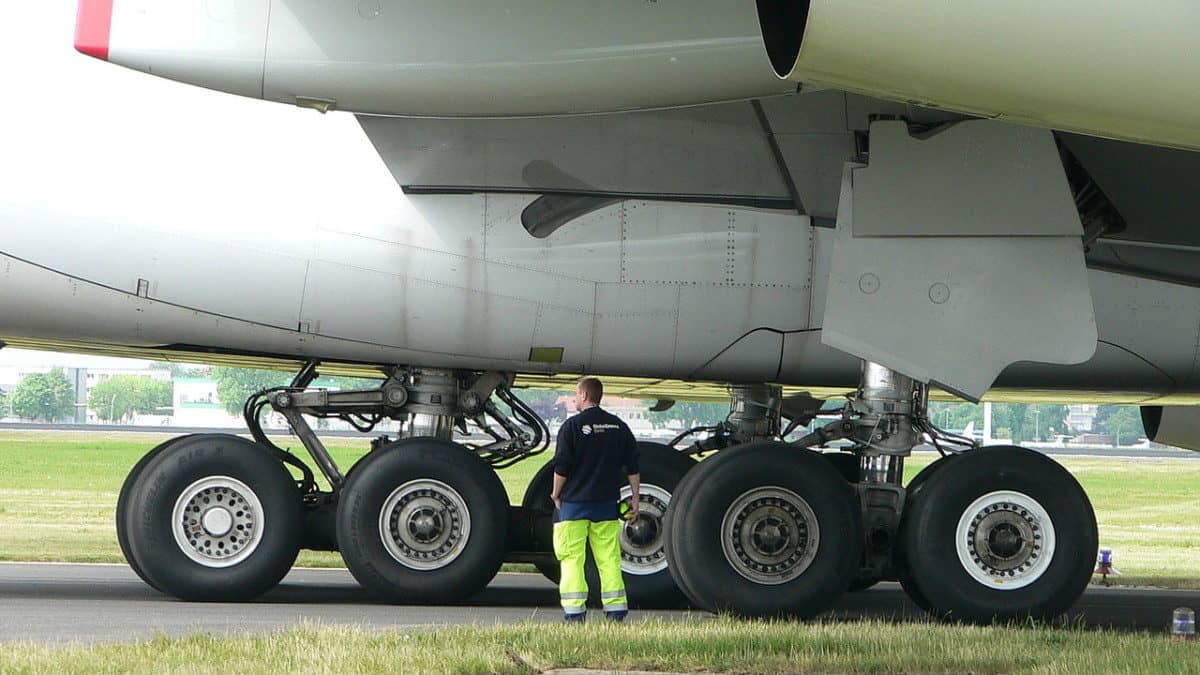
Today’s commercial airplanes have large control surfaces and when traveling at speed large quantities of force are required to move control surfaces or operate equipment. From flight control surfaces to landing gear and autopilot systems, hydraulic systems provide the power necessary for pilots to control an aircraft.
Hydraulics are used on larger aircraft to move and operate components that require more force than can be delivered by a human. Electronic control of hydraulic valves and actuators also allows autoflight systems to fly and trim the aircraft. Multiple systems are always installed for redundancy.
Without hydraulics, all of today’s large aircraft would not be possible. Even small aircraft begin to require some form of power assistance to help reduce the physical workload of the pilot. Today’s modern airplanes have complex hydraulic systems comprising miles of pipework threading all over the airplane.
Although complex, their design is kept minimal to reduce weight and areas for failure.
To find out in simple explanations how hydraulics are used on an airplane please read on…
Where Do Airplanes Use Hydraulics?
Here are the most common areas where hydraulics are used on an airplane:
Control Surfaces
The flight control systems on an aircraft consist of primary and secondary systems. The three primary flight control surfaces are ailerons, elevators, and rudder.

The secondary systems consist of flaps, leading-edge slats, spoilers, and trim systems to improve aircraft performance and relieve the pilot of demanding control requirements.
The pilots change the aircraft’s direction and attitude using the flight control system.
All of these components face high wind speeds and need considerable force to be moved.
Fly-by-wire Systems
In a fly-by-wire system, an electronic interface completely replaces flight controls that are mechanically connected to the pilot’s yoke and pedals in the cockpit.
A computer system uses electronic sensors to read the pilot’s control inputs and decides how much and fast to move the flight control surfaces to produce the desired motion. A fly-by-wire system in an aircraft uses computers to control the hydraulics by opening and closing of the required valves to send fluid to the actuators to move the flight control surfaces.
Auto Pilot/Flight Systems
In addition to the pilots placing inputs into the fly-by-wire systems the aircraft’s autopilot or autoflight systems can place inputs too. When the autoflight systems are activated by the pilots the flight management system will give commands to the hydraulic control system computer to move the flight controls to keep the aircraft in a set parameter.
Each time the aircraft’s flight regime needs to be altered the autoflight system gives the command to the hydraulic control system. The change is then monitored and adjusted until the aircraft is in the desired flight regime.
This happens hundreds of times per second on every flight control while the autoflight system is active.
Without this electronic system, the aircraft would not be able to be controlled by an autopilot of autoflight system.

Join My Newsletter & Get Great Tips, Information and Experiences To Help You Become a Superb Pilot!
Landing Gear
Hydraulics are used in the landing gear as part of the retraction/deployment system and as a damping mechanism. The retractable landing gear is crucial for fast and economical flights since it reduces drag. By leaving the landing gear extended for the entire flight the cruise speed would be reduced and the fuel burn would dramatically increase.
The landing gear needs hydraulic systems to retract and deploy because of the extreme weight of each landing gear leg.
Brakes
Friction is used by airplane brakes to slow the aircraft after touchdown, much as it is in a car. Hydraulics press brake pads onto the brake discs to generate massive clamping force.

Thrust Reversers
When a fast, heavy jet is landing, thrust reversers are essential for bringing it to a halt. Thrust reversers temporarily divert an engine’s thrust in the opposite direction by using hydraulic pressure to open the engine’s reverse thrust deflector doors.
Learn More…
Try These Articles:
* This Is Why Pilots Reduce Thrust After Takeoff?
* Planes Landing Sideways – Why Not just Land Straight?
How Do Aircraft Hydraulic Systems Work?
Hydraulics work based on Pasclas Law – An increase in pressure at any point in a confined fluid will result in an equal increase at any other end in the container. Hydraulic systems utilize a pump to pressurize fluid and valves to open/close to move actuators. These operate systems with immense force.
It is this immense force that is needed to physically move or adjust parts on an airplane. If you have ever tried to fly a large kite or move a sheet of wood in a windy storm you will know just how much strength or force it takes to control them – If you don’t have enough strength, the wind overpowers you and you lose control.
This is exactly the same on a large airplane, except instead of sheets of plywood the pilot is trying to move and control flight surfaces like rudders, ailerons, elevators, and flaps.
When wind is not an issue, the shear weight of components presents a problem. Imagine trying to manually wind up the landing gear of an Airbus A380! You have 4 sets of main landing gear containing 20 wheels, tires, hubs, and brakes plus two at the front – You are not moving that by hand.
This is where hydraulics come in!

In an airplane, hydraulics are primarily used to either control and move large surfaces in contact with high speed airflow or move large and heavy components
For hydraulic systems to work on an airplane, they need a few basic components:
Pumps
Engine-driven pumps pressurize the hydraulic fluid and move the fluid throughout the pipework. Electrically-powered pumps provide backup in case of all engines failing.
Typical airplane pumps pressurize the system to between 3000-6000psi.
Hydraulic Fluid
A specially designed fluid that does not compress under load. This transfers the force generated by the pumps to the movable actuators.
The Airbus A380 has two independent hydraulic systems. One system contains 585 liters while the second system has 545 liters.
Pipes and Fittings
Transports the fluid around the aircraft and connects the pipework to hydraulic components.
Valves
Control where the fluid goes, how much goes, and when. They are operated by the electronic hydraulic control unit.
Actuators
Move when hydraulic fluid is pumped into them. They provide the means to mechanically move flight controls and landing gear. These comprise of linear and rotary pistons and rotary gearboxes.
Accumulators
These help keep the system pressurized and prevent any dead spots in the hydraulic system. Think of them like a reservoir providing a hydro dam with a constant supply of water.
Heat Exchangers
Controls the temperature of the hydraulic fluid in the systems to maintain optimal working performance. Especially important when landing in desert cities like Dubai and then climbing to atmospheric temperatures of -50°F.
Electronic Control
Fly-By-Wire and autopilots need to give signals to the hydraulic valves to open and close. This system also monitors temperatures, pressures, and flows throughout the hydraulic system.
The electronic control systems take in all the data from the aircraft sensors and issue commands to the various output devices to keep the plane under control.
These systems also monitor the hydraulic systems for temperature, pressure, and flow fluctuations or failures and control and alert the pilots if manual action is required. Many of the systems have control logic to deal with issues automatically and in an instant.
Learn More…
Try These Articles:
* Why are Unpainted Aircraft Green or Yellow?
* Aircraft Cockpits: Why are there so many buttons!!?


